Epiphora in Dogs
Curious about Epiphora in dogs? Pet ownership is always an adventure, though sometimes the adventures can be a little more stressful than others. This is especially true when it comes to the health and welfare of our pets. When it comes to maintaining the health and happiness of man’s best friend, we sometimes run across behaviors or health conditions that require a second look. One of those is a condition known as epiphora.
If you own a small breed of dog or one with longer fur, you’ve likely heard of epiphora. You might not know what it means, however, or what it could mean for the health of your dog.

What is epiphora?
Epiphora is a medical condition in dogs that causes an excessive tearing in your dog’s eyes or - in laymen’s terms - it’s when your dog has persistently runny eyes. It is caused when there is an overflow of precorneal fluid (that very thin layer of fluid that normally covers the surface of the eye) that spills from the corner of the eye. Typically, this is due to either overproduction of tears or insufficient tear draining. It can even be caused by a combination of the two. It is one of the most common medical conditions in canine eye health, affecting a large percentage of overwise healthy pups, and you’ll likely notice it in the form of reddish-brown tear staining on your dog’s fur around their eyes.
What causes epiphora?
On its own, epiphora is not a life-threatening or even alarming condition. However, it can be a symptom of a larger issue that needs to be addressed and one you should look out for. Most often, it is accompanied by other symptoms that you should look out for, including:
- Red, bloodshot eyes
- Swelling around the eye area
- Mucus-like discharge from the eye
- Itchiness
- Heavy tear stains
These symptoms can mean that something is going on with your dog’s health, making it particularly important to investigate the possible causes behind the excessive tearing. With that in mind, there are two main causes for epiphora: eye irritation and abnormal tear drainage.
Eye Irritation
The first, and often the most obvious reason your dog’s eyes are tearing is due to irritation. When the eye is irritated, it produces a lot of extra fluid – or tears – to get rid of whatever painful element is present. If this is the case, you may also see your dog rubbing at their eyes with their paws or squinting frequently. This can be caused by several things, including:
- The presence of a foreign object (dust, sand, etc) or a scratch on the cornea
- Exposure to an allergen
- A projection in the eye by an acidic or alkaline chemical
- Smoke or wind exposure
- Entropion or Ectropion: both types of malformation of the eyelids that can cause inflammation
- Blepharitis: inflammation caused by a bacterial infection
- Conjunctivitis: This is an inflammation of the transparent mucosa and white of the eye
- A Corneal UlcerUveitis: inflammation of the inner eye
Abnormal Tear Drainage
Tears normally exit the eye through small holes called puncta. These holes lead to the nasolacrimal duct that empties into the nose. If there is a blockage in this duct - swelling due to infection, congenital defects, or even scarring due to injury - then the tears get backed up. They drain from your dog’s eyes instead, making them watery and stream into the fur beneath their eyes.
Overactive Tear Glands.
While it is an exceedingly rare scenario, some dogs do have overactive tear glands. When this happens, the lacrimal glands produce too many tears even without the presence of irritants in the eyes, infection, underlying disease, or blockages in the drainage system.
Treatment Options
Treatment for epiphora varies depending on the cause. It can be something as easy: changing the diet, prescribing an antihistamine (for allergies), applying medicated drops, or antibiotics (infections). It can also be more intensive treatments like surgery or electrolysis (genetic defects). Your vet will be able to help you choose the right option for your furry best friend.
Even if the epiphora is benign, one of the most important things you can do at this stage is to keep your pup comfortable and, most importantly, keep the area clean. Wipe away the excess fluid carefully (we recommend using one of our Squishface Wrinkle Wipes to get the job done). Make sure the under eyes stay flushed and free of bacteria before it can cause infection in the skin.
Tear Stain Treatments
One of the easiest ways to handle the residue and stained fur epiphora leaves in its wake is to invest in a good tear stain treatment. Fortunately, Squishface has a great option for that – our Tear Stain Paste. Specially formulated and manufactured in the USA, Squishface Tear Stain Paste is made with all-natural ingredients including shea butter, coconut and avocado oil, and zinc oxide. This pet-friendly formula will have your pup’s eyes clear and free of fungal or bacterial infections in no time! Not only that, but the zinc oxide forms a naturally water-repellent barrier, so you won’t need to constantly reapply.
How do you use it? That’s easy! After you clean the area with Squishface Wrinkle Wipes, you simply apply a pea-sized amount of Squishface Tear Stain Paste beneath each eye. Carefully rub it into the area – without getting it into your dog’s eyes! – and then leave on for 24-hours. Repeat these steps once daily for the next 7 to 10 days or until the stains are completely gone!
What’s Next?
In most cases, epiphora is an easily treatable condition that should not affect the long-term health of your dog. With the help of some deep cleaning on the affected area – your pooch will be back to normal in no time!
For more tips, tricks, and favorite products, roll over to the Squishface Blog. Don’t forget to check back in every week for even more canine content!






